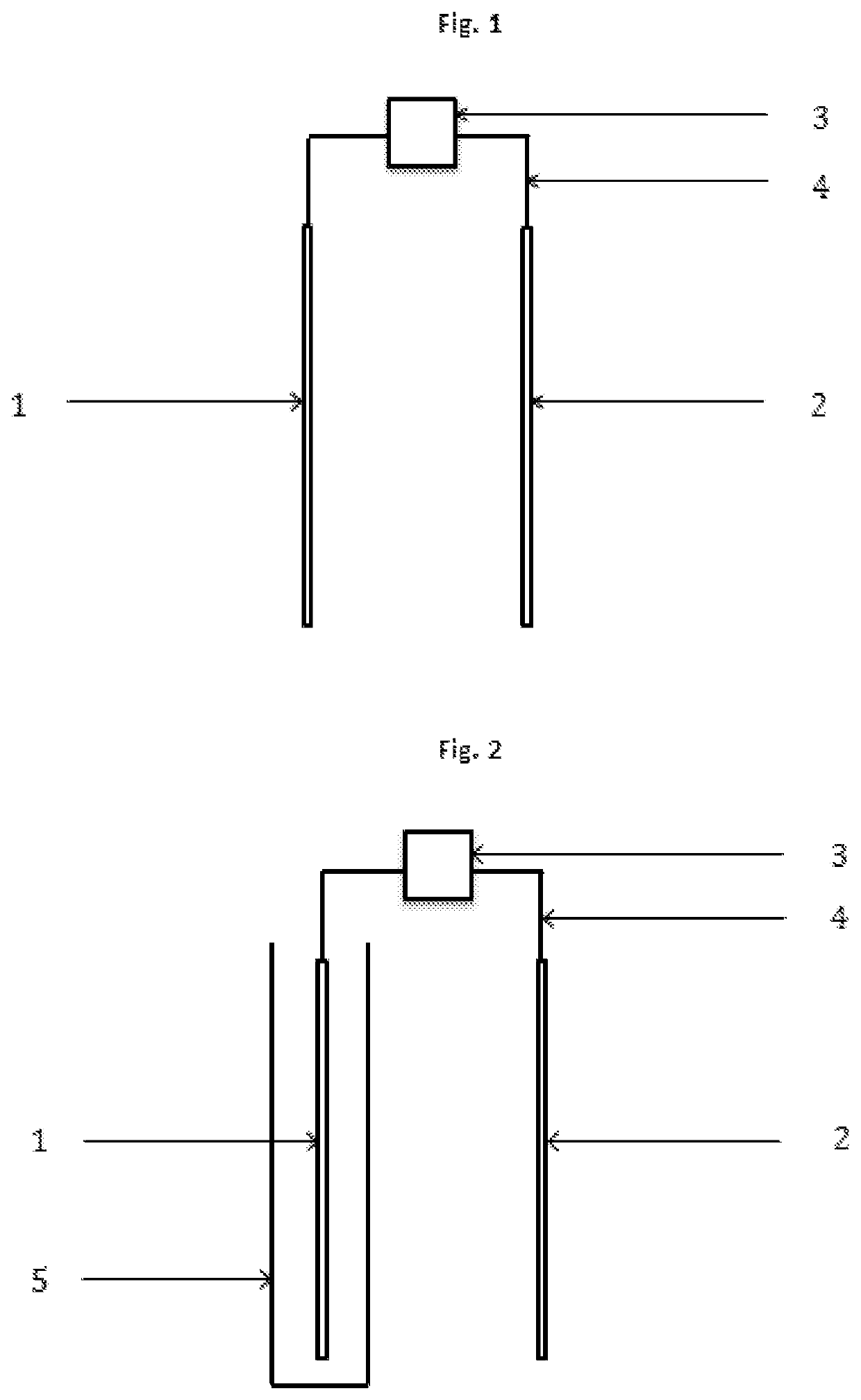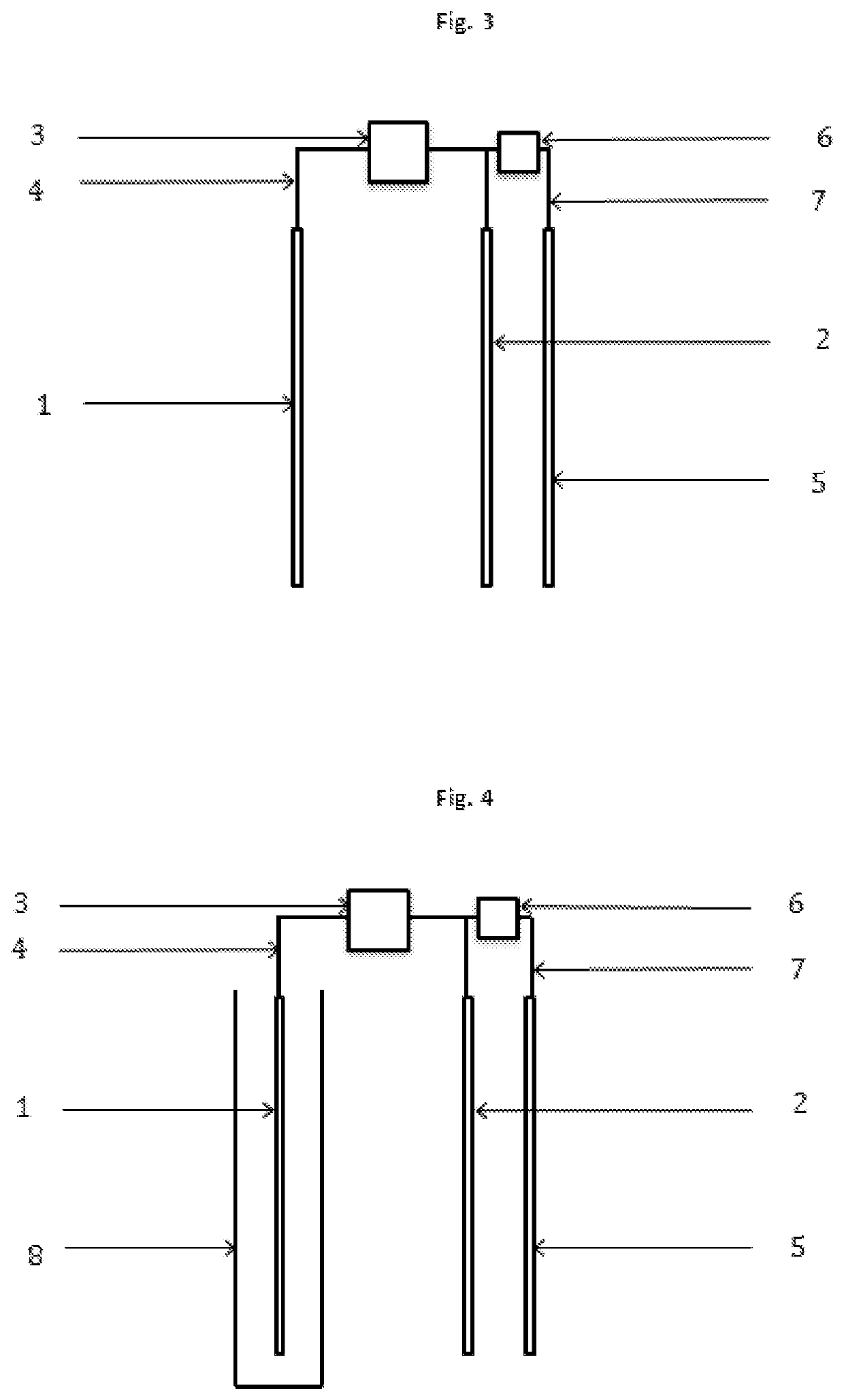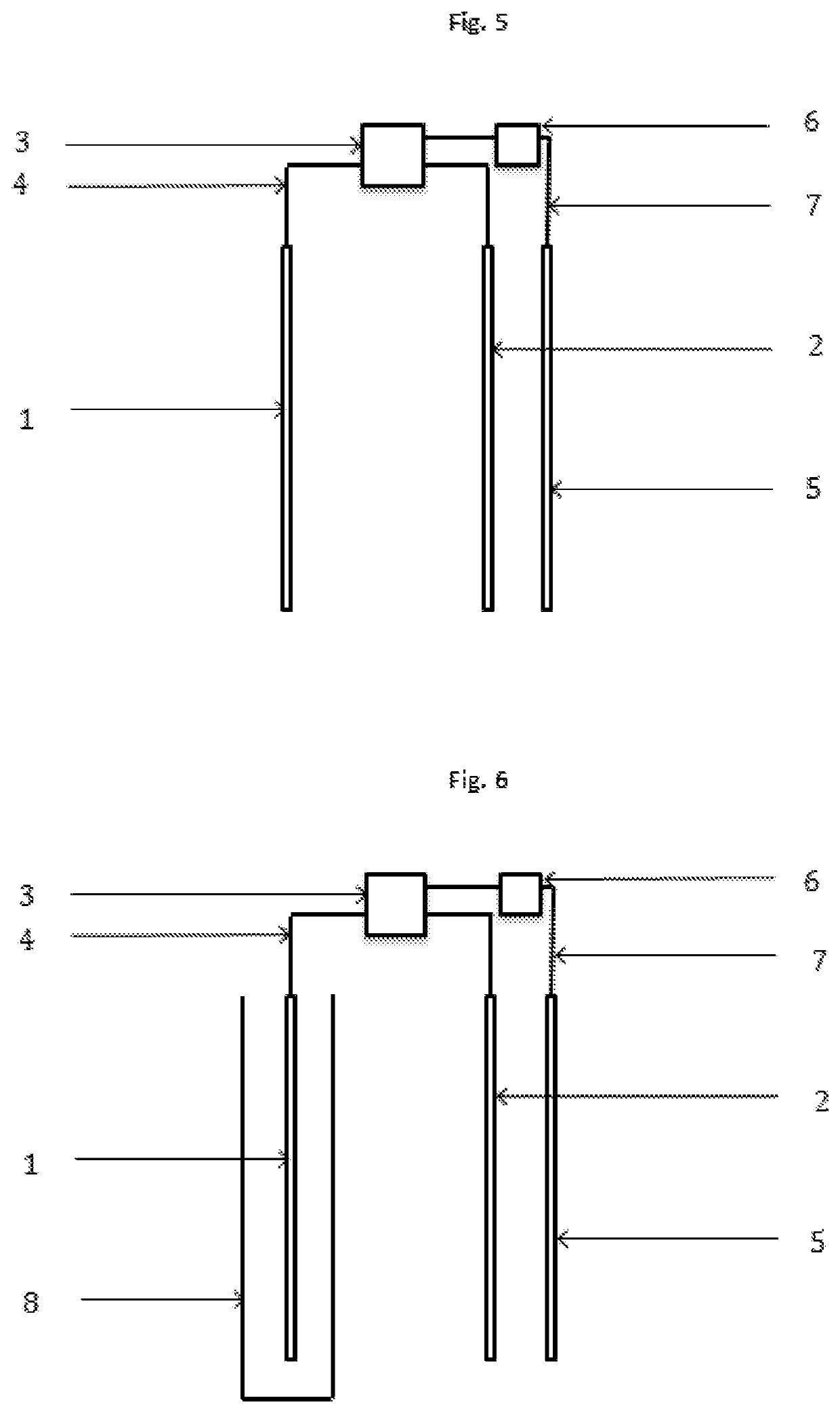Process for the depression of iron sulphides and other disposable elements in the concentration of mineral by flotation and electrochemical reactor
a technology of electrochemical reactor and iron sulphide, which is applied in the direction of chemistry apparatus and processes, instruments, water/sludge/sewage treatment, etc., can solve the problems of increasing the cost of consumables, affecting the economic benefits of iron trading, and increasing the use of certain depressants such as cyanide, so as to prevent the rusting of the electrode and increase the hydrophobicity or hydrophilicity of the surface
- Summary
- Abstract
- Description
- Claims
- Application Information
AI Technical Summary
Benefits of technology
Problems solved by technology
Method used
Image
Examples
Embodiment Construction
[0019]The present invention concerns a process according to claim 1, and an electrochemical reactor, according to claim 13, for the depression of iron sulphides and other disposable elements, mainly although not exclusively pyrite, in the concentration of mineral by flotation, which replaces, minimises, optimises or compliments the use of depressants and other chemical reagents. This invention is particularly relevant for the flotation of sulphide minerals of all types.
[0020]The process is based on the application of electric potential by at least one electrode, in order to simulate the electrochemical effect that the chemical depressants and other reagents have on the mineral particles. Therefore, through direct contact between the electrode and mineral particles, altering the surface of the mineral that are to be depressed is attained, such that it's hydrophilic character is increased, thus preventing the adhesion thereof to the bubbles, resulting in the depression thereof. This i...
PUM
| Property | Measurement | Unit |
|---|---|---|
| diameter | aaaaa | aaaaa |
| diameter | aaaaa | aaaaa |
| diameter | aaaaa | aaaaa |
Abstract
Description
Claims
Application Information
 Login to View More
Login to View More - R&D
- Intellectual Property
- Life Sciences
- Materials
- Tech Scout
- Unparalleled Data Quality
- Higher Quality Content
- 60% Fewer Hallucinations
Browse by: Latest US Patents, China's latest patents, Technical Efficacy Thesaurus, Application Domain, Technology Topic, Popular Technical Reports.
© 2025 PatSnap. All rights reserved.Legal|Privacy policy|Modern Slavery Act Transparency Statement|Sitemap|About US| Contact US: help@patsnap.com



